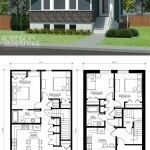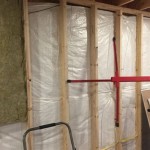Can You Make a Basement In Your House? A Comprehensive Guide
The question of whether a basement can be added to an existing house is a complex one, contingent upon a variety of factors. While building a basement under a new home during initial construction is a fairly straightforward process, retrofitting an existing structure with a basement presents significant engineering and logistical challenges. The feasibility of this project hinges on soil conditions, structural integrity, local building codes, and, of course, budget. This guide will explore these critical factors in detail, providing a comprehensive overview of the subject.
One of the primary considerations is the soil composition and the surrounding topography. The type of soil present, its stability, and its drainage characteristics will significantly impact the cost and complexity of the excavation process. Highly unstable soils, such as clay or expansive soils, may require extensive reinforcement and stabilization measures, adding substantially to the overall cost. Furthermore, the water table level is a critical factor. A high water table can lead to significant water infiltration issues, requiring sophisticated waterproofing systems and potentially a sump pump to maintain a dry basement. The slope of the land surrounding the house also plays a role; a steeply sloping lot may present challenges for excavation and drainage solutions.
Beyond soil and water considerations, the existing foundation of the house is a crucial element. The structural integrity of the existing foundation must be thoroughly assessed by a qualified engineer. The excavation process can potentially undermine the existing foundation, leading to structural damage if not properly supported. Several techniques can be employed to mitigate this risk, including underpinning, which involves strengthening the existing foundation by extending it deeper into the ground. This process is labor-intensive and requires meticulous planning and execution to ensure the stability of the house during and after the basement construction.
Key Point 1: Assessing Structural Feasibility
A thorough structural assessment is absolutely paramount before undertaking any basement addition project. This assessment goes beyond a simple visual inspection and should involve a qualified structural engineer who can analyze the foundation’s current condition, including any existing cracks, settling, or other signs of distress. The engineer will also evaluate the soil bearing capacity to determine if the ground can support the additional load imposed by the new basement walls and the existing structure. The engineer's report will provide recommendations for necessary reinforcement, underpinning, or other structural modifications needed to ensure the long-term stability of the house.
The foundation type itself will also influence the process. Slab-on-grade foundations, where the house rests directly on a concrete slab, are generally more difficult and expensive to retrofit with a basement compared to houses with existing crawl spaces. Creating a basement under a slab-on-grade foundation requires complete excavation beneath the entire house, which is a significant undertaking. Houses with crawl spaces, on the other hand, may offer more flexibility, as the crawl space can be expanded and deepened to create a usable basement.
Furthermore, the age and construction methods used for the original foundation are important factors. Older homes, built with less sophisticated construction techniques, may require more extensive reinforcement than newer homes built to modern building codes. The engineer's assessment will take all these factors into account to provide a comprehensive evaluation of the structural feasibility of adding a basement.
Consideration must also be given to the load-bearing walls within the house. These walls play a crucial role in supporting the upper floors and roof. During the basement construction, these walls must be adequately supported to prevent structural collapse. This may involve installing temporary shoring or using other support mechanisms to transfer the load while the new basement walls are being built. Failure to properly support load-bearing walls can have catastrophic consequences, underscoring the importance of meticulous planning and execution.
Key Point 2: Navigating Local Building Codes and Regulations
Local building codes and regulations governing basement construction vary significantly from one jurisdiction to another. These codes typically address issues related to structural integrity, fire safety, ventilation, egress, and waterproofing. Before commencing any work, it is essential to consult with the local building department to understand the specific requirements applicable to your project. Obtaining the necessary permits is a mandatory step and ensures that the construction meets the required safety standards.
Building codes often dictate minimum ceiling heights for basements to be considered habitable space. They may also specify requirements for window size and placement to ensure adequate natural light and ventilation. Egress requirements are particularly important for basements used as living spaces, mandating the presence of at least one emergency exit, such as an egress window or a walk-out door, to provide a safe escape route in case of a fire or other emergency.
Furthermore, zoning regulations may restrict the extent to which you can excavate and build on your property. Setback requirements specify the minimum distance that a building must be set back from property lines, and these setbacks may impact the size and configuration of the proposed basement. It is crucial to review zoning regulations to ensure that your project complies with all applicable restrictions.
Compliance with local building codes is not merely a legal requirement; it is also essential for ensuring the safety and well-being of the occupants of the house. Failure to comply with these codes can result in costly fines, delays in construction, and potentially dangerous living conditions. Therefore, engaging with the local building department early in the planning process is highly recommended.
Aside from general building codes, some areas may have specific regulations regarding excavation and soil management. These regulations may address issues related to erosion control, dust suppression, and the proper disposal of excavated soil. These environmental regulations aim to protect the surrounding environment and prevent damage to neighboring properties. Adhering to these regulations is crucial to avoid potential legal and environmental liabilities.
Key Point 3: Addressing Waterproofing and Drainage
Waterproofing and drainage are critical considerations in any basement construction project. A poorly waterproofed basement can be susceptible to water infiltration, leading to mold growth, structural damage, and unhealthy living conditions. A comprehensive waterproofing strategy should address both exterior and interior aspects of the basement.
Exterior waterproofing typically involves applying a waterproof membrane to the exterior of the basement walls. This membrane acts as a barrier to prevent water from penetrating the concrete. Various types of waterproofing membranes are available, including liquid-applied membranes, sheet membranes, and bentonite clay systems. The choice of membrane depends on the soil conditions, the water table level, and the budget.
In addition to the waterproofing membrane, a drainage system is essential to channel water away from the foundation. This system typically consists of perforated drain pipes installed around the perimeter of the foundation, which collect water and direct it to a sump pit. A sump pump located in the sump pit then pumps the water away from the house, preventing it from accumulating around the foundation.
Interior waterproofing measures may include applying a sealant to the interior walls and installing a vapor barrier to prevent moisture from entering the basement. Interior drainage systems can also be installed to collect water that may seep through the walls and direct it to a sump pit. These interior systems provide an additional layer of protection against water damage.
Proper grading around the house is also crucial for effective drainage. The ground should slope away from the foundation to prevent water from pooling around the house. Gutters and downspouts should be properly maintained to ensure that rainwater is effectively channeled away from the foundation.
Choosing the appropriate waterproofing and drainage systems depends on the specific site conditions and the local climate. Consulting with a waterproofing specialist is recommended to develop a comprehensive waterproofing strategy that will protect the basement from water damage.
The cost of adding a basement to an existing house can vary significantly depending on the factors discussed above. The complexity of the excavation, the need for structural reinforcement, the local building codes, and the waterproofing requirements will all influence the overall cost. It is essential to obtain multiple quotes from reputable contractors and to carefully review the scope of work and the materials used. A detailed cost breakdown will help you understand the different components of the project and make informed decisions about your budget.
In addition to the direct construction costs, there are also indirect costs to consider, such as architectural and engineering fees, permit fees, and potential landscaping costs. It is also important to factor in the cost of any temporary housing that may be required during the construction process. These indirect costs can add up significantly, so it is essential to include them in your overall budget.
Adding a basement to an existing house is a major undertaking that requires careful planning, meticulous execution, and a significant financial investment. While it is feasible in many cases, it is crucial to thoroughly assess the structural feasibility, navigate local building codes, and address waterproofing and drainage concerns. By carefully considering all these factors, you can increase the likelihood of a successful and long-lasting basement addition.
Ultimately, the decision of whether or not to add a basement to your existing house is a personal one that should be based on a careful weighing of the costs and benefits. If you are considering this project, it is highly recommended to consult with experienced professionals, including structural engineers, contractors, and architects, to obtain expert advice and guidance.

Can You Add A Basement To An Existing House

Can You Add A Basement To An Existing House

Basement Extension Have You Ever Thought About Adding A Urbanist Architecture Small Company London

How Much Does It Cost To Build A Basement In 2024 Checkatrade

Can I Convert My Cellar Into A Liveable Space Simply Basement London Conversion Company

Basement Conversion Ideas For A Cellar

Why Converting Your Basement Can Improve Property Blog

Pros And Cons Of Having Basements In Your House Happho

What Are The Planning Rules For Basement Extensions Design Me

Cellar Conversions Simply Basement London Conversion Company
Related Posts







